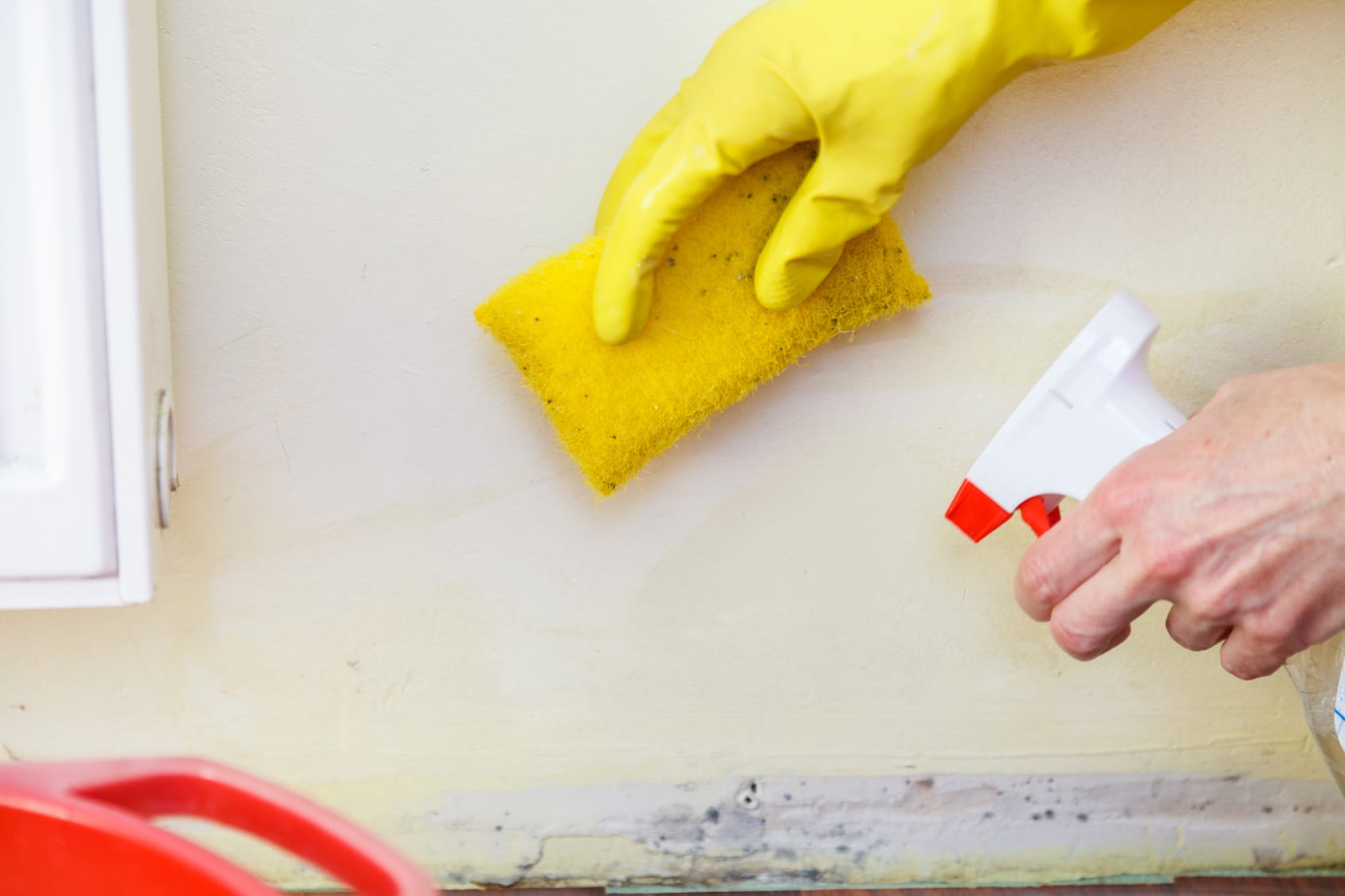Effective Post Mold Remediation Cleaning Protocols
Effective Post Mold Remediation Cleaning Protocols
Blog Article
Professional Tips for Post Mold And Mildew Remediation Success
In the world of mold and mildew removal, effectively eliminating mold is only half the fight; the true obstacle hinges on stopping its reappearance. Post-remediation initiatives play a critical duty in guaranteeing a mold-free setting in the long term. By adhering to skilled pointers and ideal techniques, people can guard their areas against mold and mildew rebirth and maintain a healthy and balanced indoor environment. It remains in this phase of the removal procedure that focus to detail and proactive steps genuinely make a difference.
Monitor Moisture Degrees On A Regular Basis
After finishing mold and mildew remediation treatments, keeping ideal humidity levels is essential to avoid mold and mildew re-growth and make certain a healthy indoor atmosphere. High humidity degrees over 60% develop a helpful environment for mold to prosper, making regular keeping track of an aggressive measure to avoid any future mold and mildew issues.
In addition, developing a routine timetable for humidity checks, specifically in high-risk locations such as washrooms, basements, and kitchens, is an aggressive method to mold and mildew prevention. By regularly keeping an eye on humidity levels, residential property owners can efficiently mitigate the threat of mold reoccurrence and maintain a healthy and balanced interior atmosphere post-remediation.
Conduct Thorough Inspections Post-Remediation
Following the conclusion of mold and mildew removal procedures, it is critical to conduct extensive assessments to validate the efficiency of the remediation procedure. These post-remediation assessments are important in making certain that the mold problem has actually been successfully resolved and that there is no reoccurrence or staying mold growth. Examinations must be carried out by certified experts that have know-how in identifying mold and examining interior air top quality.
During these inspections, numerous techniques such as visual evaluations, air tasting, and surface sampling may be employed to extensively review the remediated locations. Aesthetic evaluations entail an in-depth examination of the properties to examine for any visible indicators of mold and mildew development or water damage. Air tasting helps in establishing the airborne mold and mildew spore levels, while surface area sampling can spot mold and mildew bits on surface areas.
Implement Proper Air Flow Techniques
After ensuring the performance of the mold removal process with comprehensive examinations, the following important action is to focus on implementing correct ventilation techniques. Appropriate air flow is vital in protecting against mold and mildew reoccurrence by managing wetness degrees and promoting air blood circulation.
Correct ventilation not only help in preventing mold navigate here and mildew development however additionally contributes to the general health and wellness and comfort of occupants. By making certain appropriate air flow throughout the residential or commercial property, you can minimize the threat of mold and mildew regrowth and produce a much healthier living setting.

Usage Mold-Resistant Materials for Repairs
To boost the long-lasting efficiency of mold removal efforts, integrating mold-resistant products for repair services is crucial in minimizing the threat of future mold and mildew development. Mold-resistant products are designed to withstand wetness and prevent mold growth, making them a vital option for locations susceptible to wetness and humidity. When fixing locations influenced by mold, utilizing materials such as mold-resistant drywall, mold-resistant paints, and mold-resistant caulking can aid protect against mold and mildew reoccurrence.
Mold-resistant drywall is an exceptional choice to conventional drywall in locations like washrooms and cellars where wetness levels are greater. When subjected to damp conditions, this kind of drywall has an unique layer that resists mold development even. Furthermore, using mold-resistant paints including antimicrobial agents can even more prevent mold and mildew growth on wall surfaces and ceilings.
In areas where moisture prevails, such as restrooms and kitchen areas, using mold-resistant caulking around sinks, tubs, and windows can aid secure out water and stop mold from taking hold in fractures and holes. By purchasing these mold-resistant materials throughout repairs post-remediation, you can significantly decrease the likelihood of future mold and mildew problems and keep a healthier indoor try this website environment.
Maintain Tidiness and Address Water Issues
After mold remediation, it is important to maintain a tidy environment to prevent the regrowth of mold. Leakages, water intrusion, or high moisture levels can produce the perfect breeding ground for mold and mildew, so it is imperative to take care of any type of water-related issues instantly.
To maintain tidiness, think about using HEPA filters in vacuums and air cleansers to trap mold spores and prevent their flow airborne. Additionally, making certain appropriate air flow in locations prone to moisture build-up, such as bathrooms and cooking areas, can aid keep humidity levels in check. By remaining vigilant regarding sanitation and attending to water issues quickly, you can properly protect against mold and mildew reinfestation and keep a healthy and balanced interior atmosphere.
Verdict

In the realm of mold and mildew removal, effectively eradicating mold is just half the fight; the true difficulty lies in stopping its reappearance. After finishing mold and mildew remediation procedures, maintaining optimum humidity levels is essential to prevent mold re-growth and guarantee a healthy and balanced indoor environment. High humidity levels above 60% create a favorable environment for mold to grow, making routine checking a proactive action to prevent any type of future mold problems.
To boost the long-term performance of mold removal efforts, incorporating mold-resistant materials for fixings is vital in minimizing the risk of future mold development. After mold removal, it is important to maintain a clean atmosphere to these details avoid the regrowth of mold and mildew.
Report this page